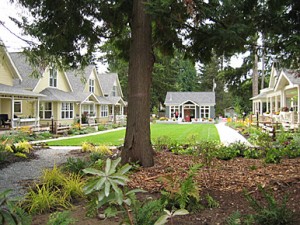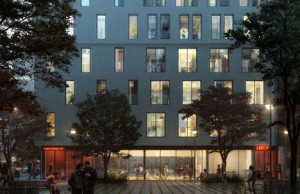While the country is still reeling from the effects of the housing crash and economic crises, a new trend is taking big cities by storm. Microhousing or aPodments, a brand name for these ultra-compact living spaces, are springing up everywhere from Seattle to Washington D.C. Its not just college students and singles leading the charge. Families are realizing the positives of downsizing from McMansions to smaller square footage and tiny mortgages. Smaller houses are not only good for the environment, less space and materials consumed as well as fewer fossil fuels burned for electric and HVAC needs, but could living small actually make people happier?
Small houses need less maintenance and less upkeep for yards, giving families more time to spend together. In addition, many of these Pod complexes are centered around shared common areas, everything from outdoor spaces to kitchens and laundry facilities. This means more human interactions and stronger relationships, neighbors sharing meals together, watching each others kids, and helping out when someone is in need.
Many complexes which can be as small as four units or contain hundreds, include utilities in the rental price as well as cable and internet. Units generally have private bathrooms, fridges and can come furnished. With fewer bills people are able to put the savings toward traveling, retirement or college.
Just how micro are we talking? Microhouses range anywhere from 150 sq feet to and up. This may seem to drastic for some, especially those with children. Families will have to decide if the cost benefits are worth changing what we view as the norm; big houses with large lots filled with stuff. In the meantime, this is a great solution for those seeking affordable housing near urban centers or just wishing to shrink their environmental footprint. I for one think this is one trend that is here to stay.
For more discussion on Microhousing please see:
Grist.org Peace in a pod: How tiny apartments could reshape the big city by Claire Thompson









